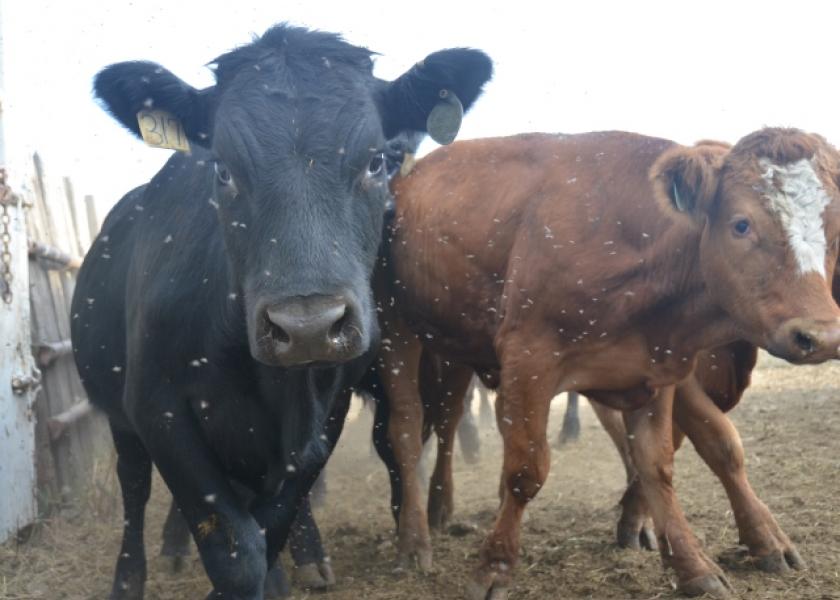Fly Control in Beef Grazing Herds

Flies are like pennies, they can add up to real dollars.
By: Kevin S. Gould, Michigan State University Extension
The two major species of flies that cause the most serious production losses are the horn fly and face fly. The horn fly alone is estimated to cause animal losses to the United States beef industry over 1.5 billion with current market prices. Face flies and horn flies are the main targets for control. Fly levels above threshold change cattle behavior resulting in reduced grazing time and performance.
The adult horn fly, which is about one-half the size of a house fly, has piercing/ sucking mouth parts and feeds on blood and tissue fluids of cattle. They spend most of their adult life on cattle and feed 20 to 40 times a day. They are normally found on the animal’s back, but may migrate to the sides and the belly as the temperatures increase.
The face fly is about the size of a house fly. They are non-biting and feed on secretions from the eyes and muzzle. They avoid entering dark places, such as a barn, while on the animal. The female lays eggs on freshly deposited manure like the horn fly; however, unlike the horn fly they are present on cattle only about 10 percent of the time. Because they spend so little time on the animal and do not feed on blood they are much harder to control. In addition to being an annoyance to the animal their feeding activity increases the risk of spreading diseases like pinkeye.
Cattle can tolerate low horn fly populations. When horn fly populations reach 100-200 per animal it is economically advantageous to begin a control program. There are several methods of fly control, such as insecticide sprays, dusts, pour-ons, oilers/rubs, dust bags, ear tags, oral larvicides in mineral and blocks. All of these methods are effective and have a place in the control program; however, the best fly control can most likely be obtained through an integrated fly control program and follows specific product label and applications guidelines.
In an integrated fly control program, generally two or more products that complement each other are used. One product should give good control where the other may be weak, thus reducing the probability of flies developing insecticide resistance Insecticide resistance develops as a result of continued exposure of the fly population to the same insecticide or same family of insecticides and/or exposure to less than lethal levels of the insecticide.
To combat this development of resistance to insecticides, a producer should consider alternating a fly control, methods annually. Timing is critical. Fly tags for example, should be administered in early-mid June. This will extend the effectiveness of the ear tags further into the fall. Two tags should be applied to larger animals to insure that a lethal dosage of insecticide is delivered. Additionally, to reduce insecticide resistance, fly tags must be removed and disposed annually at the conclusion of the fly season.
Other methods of fly control which have been developed and may be used more in the future such as fly traps, sex attractants, sterile male flies and predator wasps. Monitor the effectiveness of your fly control program and supplement it with another method or insecticide during the season as necessary. The best method of fly control is the integrated approach, using several different methods and/or insecticides for a longer lasting, more effective fly control program.







